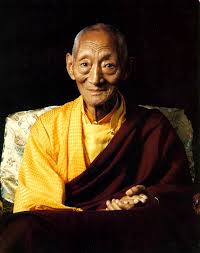Approaching refuge
The distinction between Buddhists and non-Buddhists resides in taking refuge in the Three Jewels. Buddhists take refuge, non-Buddhists do not.
The Three Jewels-Buddha, Dharma, and Sangha-are identical in the Hinayana and Mahayana, but the teachings have some differences in the notion of approaching refuge.
In the Hinayana, one takes refuge for oneself, with the purpose of liberating oneself from the suffering of samsara.
The vision of Mahayana is larger. In the Mahayana, one takes refuge for the purpose of liberating all beings in samsara, or by thinking of all beings as taking refuge at the same time and by doing so, eliminating their suffering. In the Hinayana, the practitioner takes refuge until death occurs, while in Mahayana, it is done until attaining Awakening.
Finally, the Vajrayana offers a unique approach. One takes refuge not only in the Three Jewels, but also in the Three Roots.
The lamas, that is to say, the source lama and the lamas of the lineage, are the root of the grace
The yidams, the root of accomplishments
The protectors of the Dharma and the dakinis, the root of activity that removes obstacles on the path
Vajrayana also establishes a distinction among outer, inner, and secret levels of taking refuge.The outer level refers to taking refuge in the Three Jewels and the Three Roots as they are usually conceived.
The inner level means taking refuge in the source lama considered only as the union of all places of refuge. In this case, the lama’s body represents the Sangha, the lama’s speech, the Dharma, and the lama’s mind, the Buddha. Or, the body represents the lamas, speech represents the protectors and dakinis, and the mind represents the yidams.
The secret level refers to taking refuge in our own mind. This implies that we experience our mind’s emptiness as the Absolute body (Sanskrit, dharmakaya), its clarity as the body of perfect experience (Sanskrit, sambhogakaya), and the union of emptiness and clarity as the body of emanation (Sanskrit, nirmanakaya).
– Kalu Rinpoche–Secret Buddhism/Vajrayana Practices




